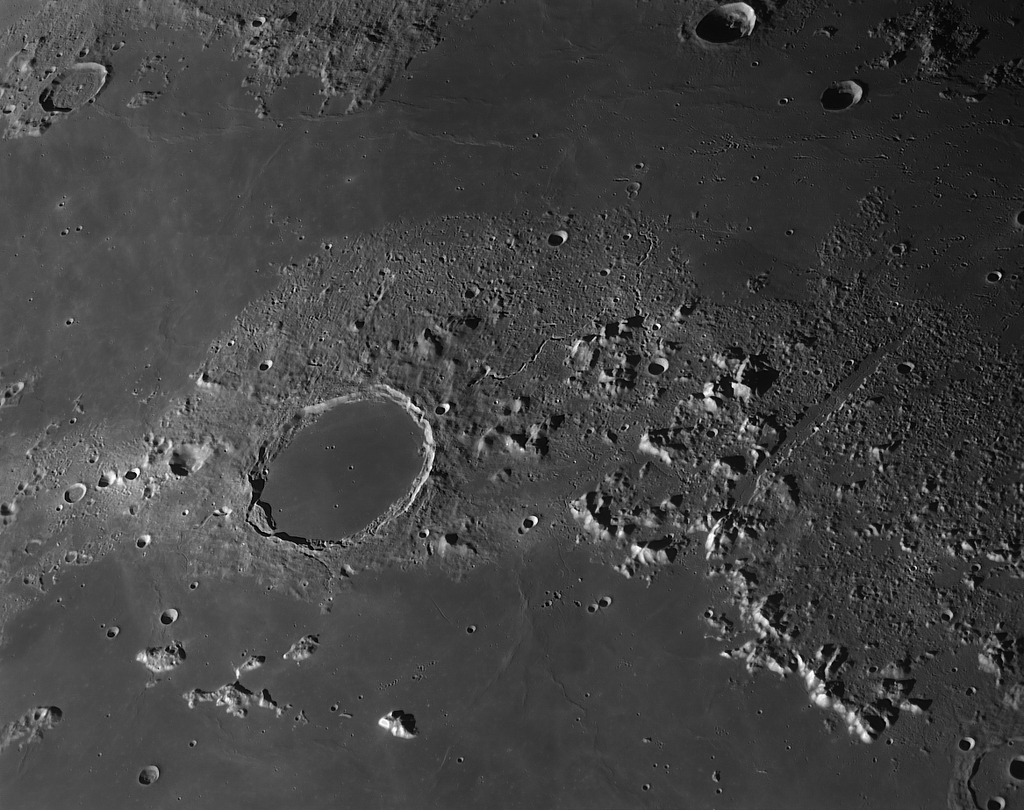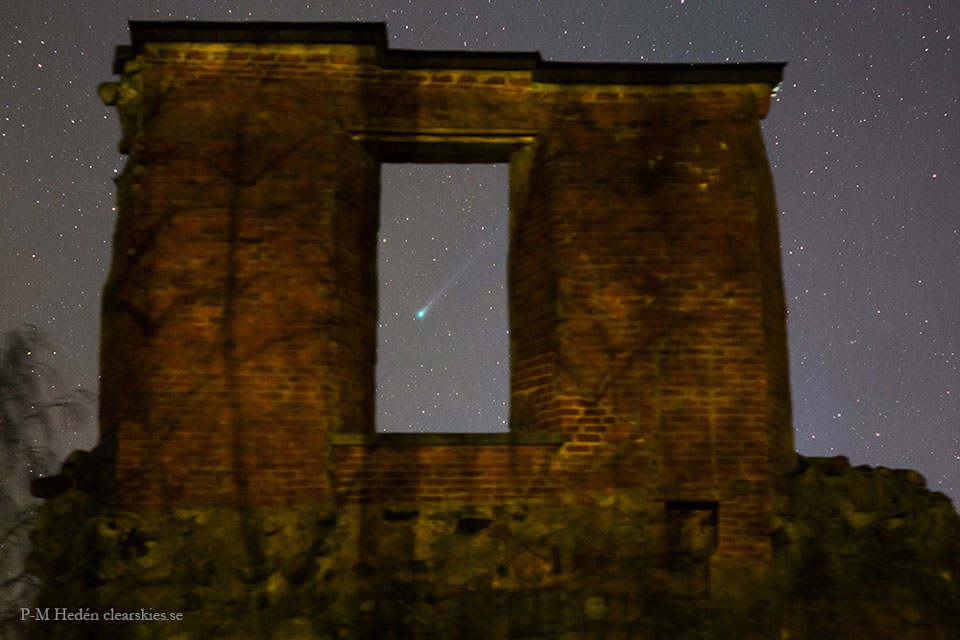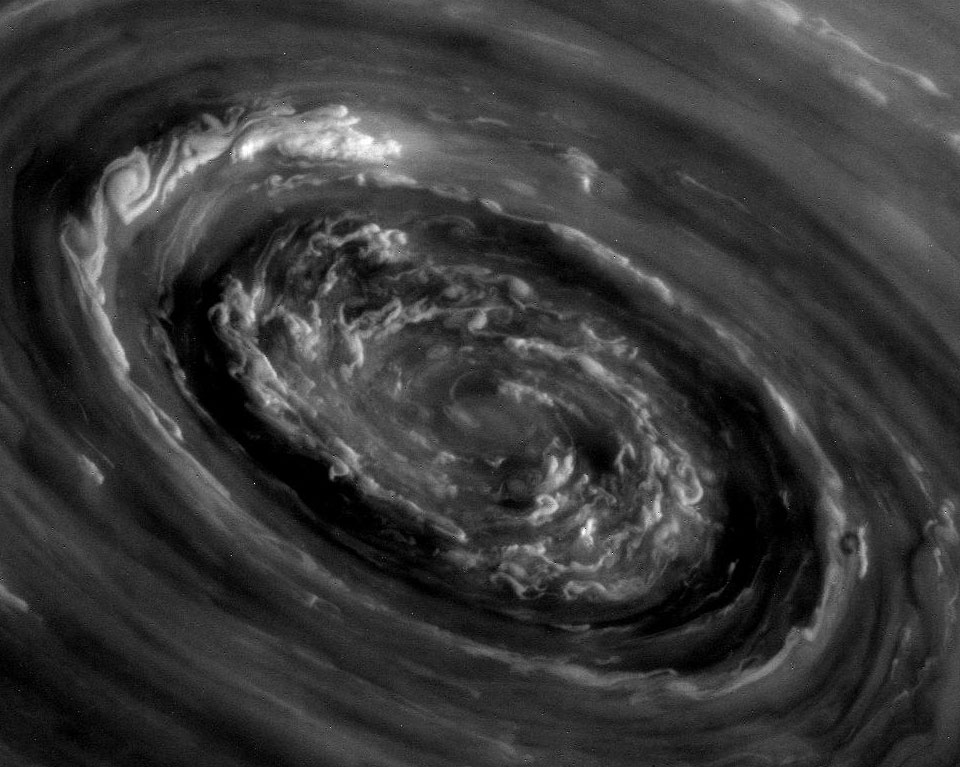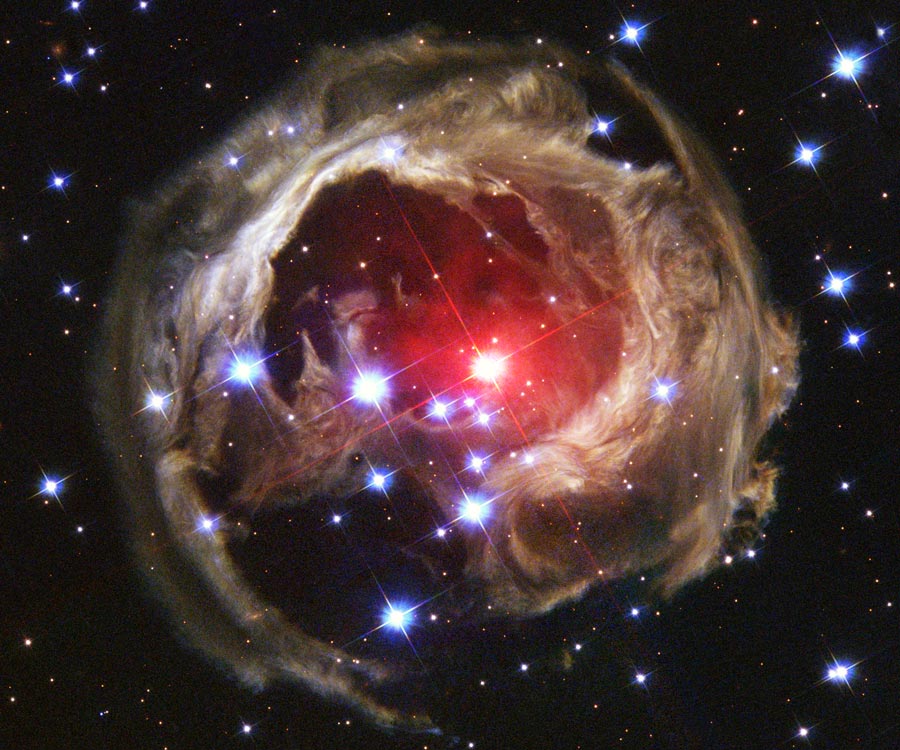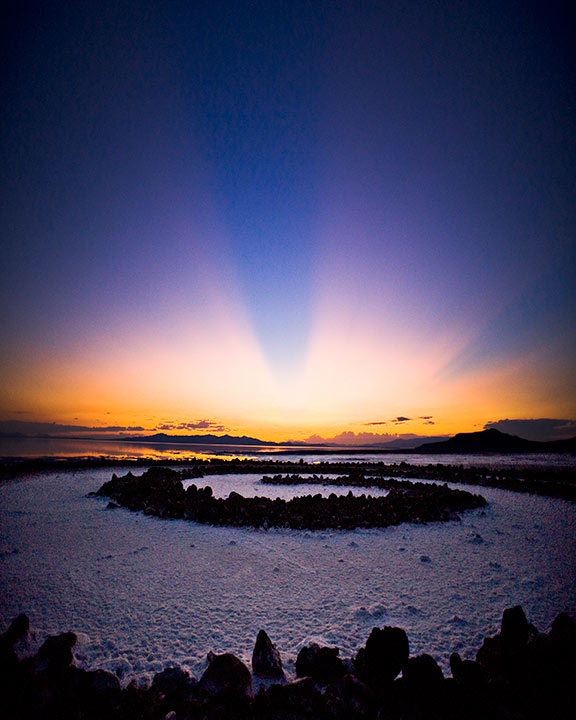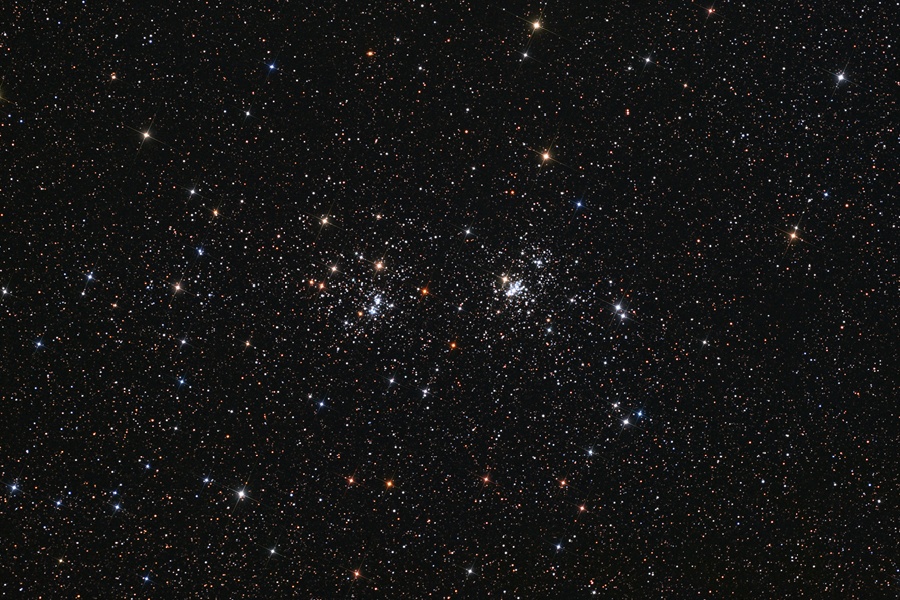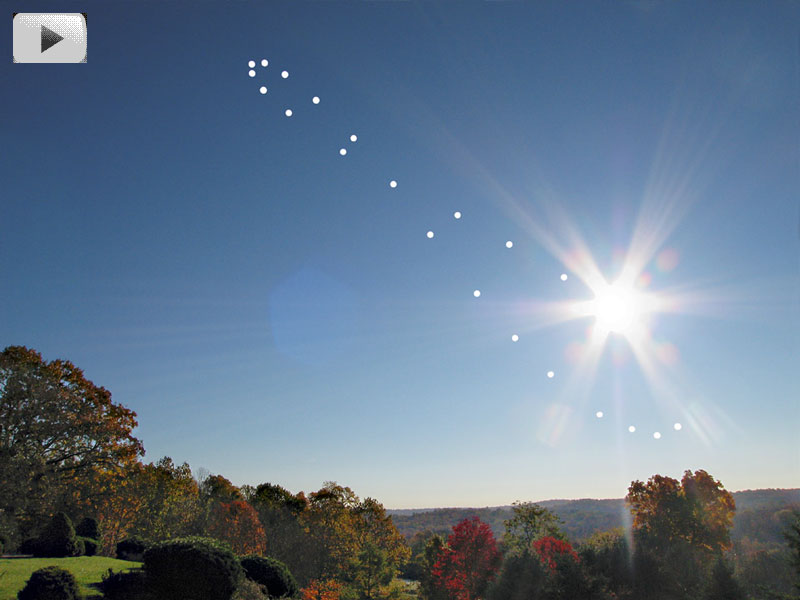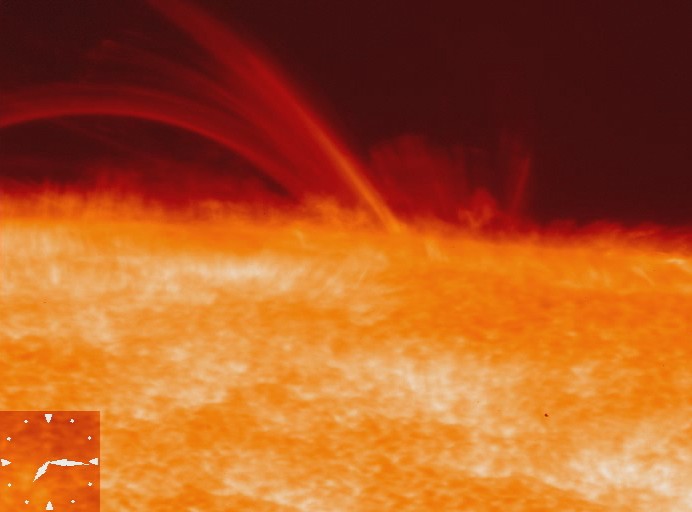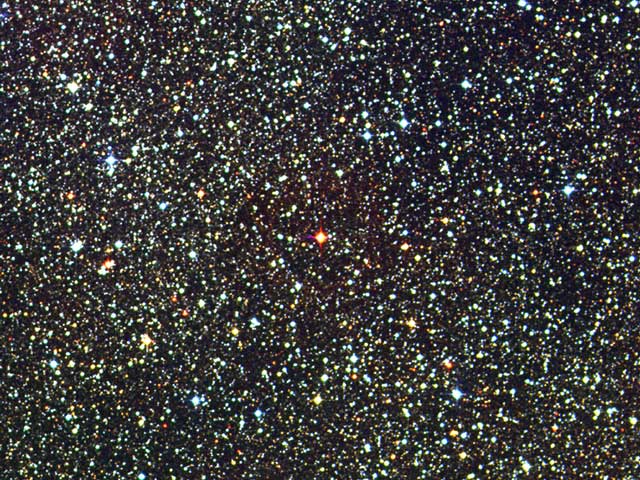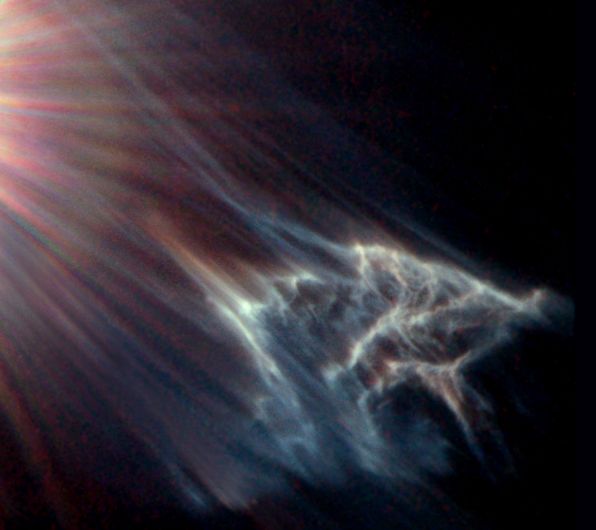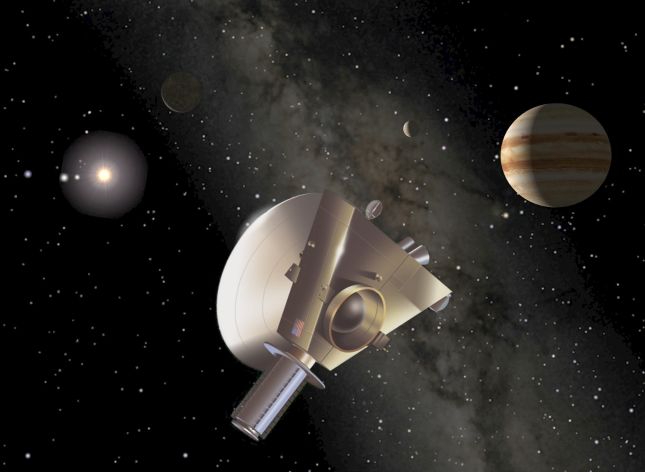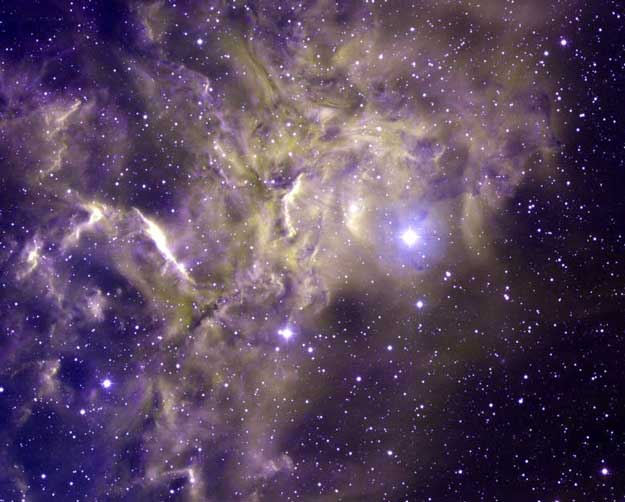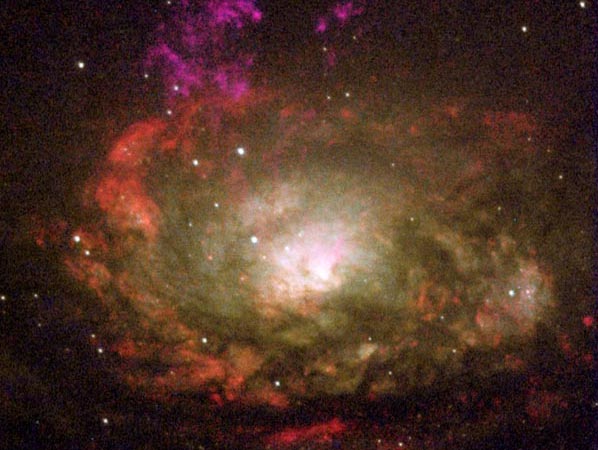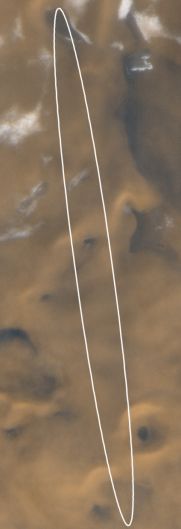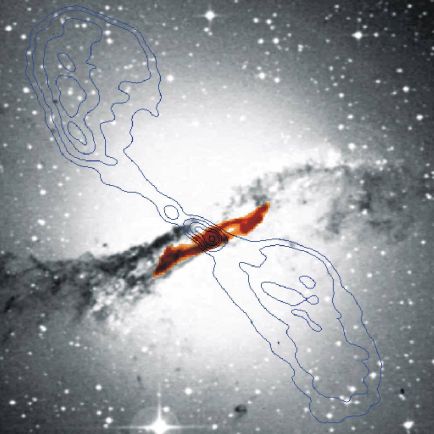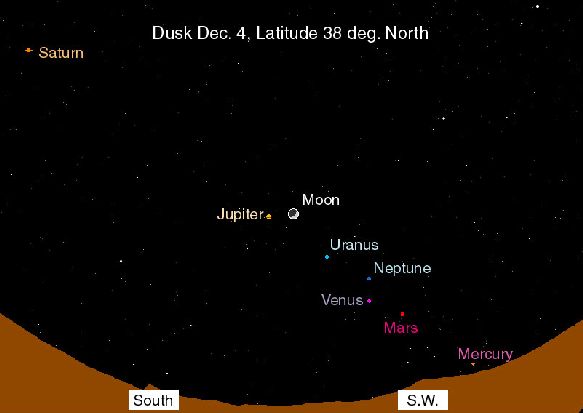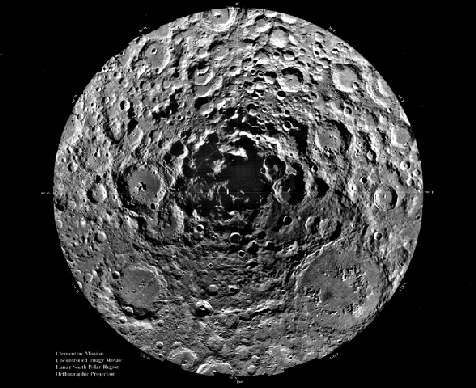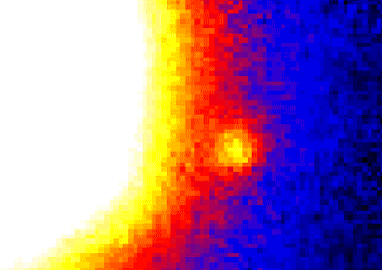| << Previous | Index | Next >> |
2014 The dark-floored, 95 kilometer wide crater Plato and sunlit peaks of the lunar Alps (Montes Alpes) are highlighted in this sharp digital snapshot of the Moon's surface. While the Alps of planet Earth were uplifted over millions of years as continental plates slowly collided, the lunar Alps were likely formed by a sudden collision that created the giant impact basin known as the Mare Imbrium or Sea of Rains. The mare's generally smooth, lava-flooded floor is seen below the bordering mountain range. The prominent straight feature cutting through the mountains is the lunar Alpine Valley (Vallis Alpes). Joining the Mare Imbrium and northern Mare Frigoris (Sea of Cold) the valley extends toward the upper right, about 160 kilometers long and up to 10 kilometers wide. Of course, the large, bright alpine mountain below and right of the valley is named Mont Blanc. The tallest of the lunar Alps, it reaches over 3 kilometers above the surface. Lacking an atmosphere, not to mention snow, the lunar Alps are probably not an ideal location for a winter vacation. Still, a 150 pound skier would weigh a mere 25 pounds on the Moon.
2013 This new comet is quite photogenic. Comet Lovejoy, discovered only three months ago, was imaged through ruins of ancient Mörby Castle in Sweden last week sporting a green-glowing coma and tails trailing several degrees. The past few weeks have been an unusually active time for comet watchers as four comets were visible simultaneously with binoculars: ISON, Lovejoy, Encke, and LINEAR. C/2013 R1 (Lovejoy) comet is currently visible to the unaided eye from a dark location. As Monday's new Moon will provide little glare, the next few days provide a good time to see Comet Lovejoy as it reaches its peak brightness. In two and a half weeks, Comet Lovejoy will reach its closest approach to the Sun at a distance just inside the orbital distance of the Earth.
2012 What's happening at the north pole of Saturn? A vortex of strange and complex swirling clouds. The center of this vortex was imaged in unprecedented detail last week by the robotic Cassini spacecraft orbiting Saturn. These clouds lie at the center of the unusual hexagonal cloud system that surrounds the north pole of Saturn. Saturn's north pole precessed into sunlight just a few years ago, with Cassini taking only infrared images of the shadowed region previously. The above image is raw and unprocessed and is being prepared for release in 2013. Several similar images of the region have recently been condensed into a movie. Planetary scientists are sure to continue to study this most unusual cloud formation for quite some time.
2011 For reasons unknown, star V838 Mon's outer surface suddenly greatly expanded with the result that it became the brightest star in the entire Milky Way Galaxy in January 2002. Then, just as suddenly, it faded. A stellar flash like this had never been seen before. It's true that supernovae and novae expel matter out into space. But while the V838 Mon flash appears to expel material into space, what is seen here is actually an outwardly moving light echo of the bright flash. In a light echo, light from the flash is reflected by successively more distant rings in the ambient interstellar dust that already surrounded the star. V838 Mon lies about 20,000 light years away toward the constellation of Monoceros the unicorn. In this Hubble Space Telescope image from February 2004, the light echo is about six light years in diameter.
2010 In dwindling twilight at an August day's end, these broad dark bands appeared in the sky for a moment, seen from Robert Smithson's Spiral Jetty on the eastern shore of Utah's Great Salt Lake. Outlined by rays of sunlight known as crepuscular rays, they are actually shadows cast by clouds near the distant western horizon, the setting Sun having disappeared from direct view behind them. The cloud shadows are parallel, but seem to converge in the distance because of perspective. Coiled in the salt-encrusted lake surface, Smithson's most famous earthwork provides a dramatic contrast to the converging lines. The Spiral Jetty was constructed in 1970, when the water level was unusually low and was completely submerged in a few years as the level rose. Now just above water again, it has spent much of its existence submerged in the briny lake.
2009 A lovely starfield in the heroic northern constellation Perseus holds this famous pair of open or galactic star clusters, h and Chi Perseii. Also cataloged as NGC 869 (right) and NGC 884, both clusters are about 7,000 light-years away and contain stars much younger and hotter than the Sun. Separated by only a few hundred light-years, the clusters' ages based on their individual stars are similar - evidence that they were likely a product of the same star-forming region. Always a rewarding sight in binoculars, the Double Cluster is even visible to the unaided eye from dark locations. Star colors (and spikes) are enhanced in this beautiful, wide field, telescopic image.
2008 On December 1, bright planets Venus and Jupiter gathered near the young crescent Moon, an inspiring celestial scene in early evening skies around the world. But from some locations the Moon actually passed in front of Venus, interrupting the tight grouping with a lunar occultation. Captured from Wildon, Austria, this twilight view shows the silvery evening star about five minutes before it slipped behind the dark lunar limb and vanished from sight for more than hour. The image is a combination of long and short exposures showing details of the lunar surface illuminated by both faint earthshine and bright sunlight. In the inset, recorded later in darkened skies over Breil-sur-Roya in southeastern France, a dazzling Venus has reappeared below the bright lunar crescent. Of course, Jupiter, at the upper right about 2 degrees from Venus and Moon, is sporting moons of its own seen as tiny pinpricks of light on either side of the bright planet.
2007 An analemma is that figure-8 curve that you get when you mark the position of the Sun at the same time each day throughout planet Earth's year. Above, 26 separate exposures were recorded to illustrate the regular solar motion -- a difficult project performed mostly during the calendar year 2006. The images were taken at 8 am in the morning in northern New Jersey, USA, and digitally combined with a single foreground image later. The individual images have since been combined into a movie. Solstices correspond to the top and bottom of the figure-8, indicating the northern and southernmost excursions of the Sun in the sky. The tilt of planet Earth's axis and the variation in speed as it moves around its orbit combine to produce the graceful analemma curve.
2006 Plumes of hot gas shoot across the surface on even an average day on the Sun. Such volatile activity was captured in dramatic detail recently by the new Hinode satellite launched by Japan in late September. Near the horizon, active regions around a sunspot eject hot plasma along the magnetic field lines that connect the sunspot to surrounding regions in the solar atmosphere. Bright regions are hotter and more active. The bubbling granularity and continuous activity of the Sun's photosphere is visible in the foreground. This frame from the movie is in representative color and covers a solar region of about 8,000 kilometers. (Note: To download the full MPG movie file, click here.)
2005 What is the closest star to our Sun? It is Proxima Centauri, the nearest member of the Alpha Centauri triple star system. Light takes only 4.22 years to reach us from Proxima Centauri. This small red star, captured in the center of the above image, is so faint that it was only discovered in 1915 and is only visible through a telescope. Stars of all types from our Milky Way Galaxy are visible in the background. The brightest star in the Alpha Centauri system is quite similar to our Sun, has been known as long as recorded history, and is the third brightest star in the night sky. The Alpha Centauri system is primarily visible from Earth's Southern Hemisphere.
2004 In the well known Pleiades star cluster, a star's light is slowly destroying this wandering cloud of gas and dust. Above, the star Merope lies just off the upper left edge of this picture from the Hubble Space Telescope. The cloud, known as IC 349, and the star have been in existence for millions of years. In the past 100,000 years, however, part of the cloud has by chance moved so close to the star - only 3,500 times the Earth-Sun distance - that the starlight itself is having a very dramatic effect. Pressure of the star's light significantly repels the dust in the reflection nebula with smaller dust particles being repelled more strongly. Eventually parts of the dust cloud have become stratified and point toward Merope, with the closest particles being the most massive and so the least affected by the radiation pressure. A longer-term result will be the general destruction of the dust by the energetic starlight.
2003 Headed for the first close-up exploration of the Pluto-Charon system and the icy denizens of the Kuiper belt, NASA's New Horizons spacecraft is pictured here in an artist's vision of the robot probe outward bound. The dramatic scene depicts the 465 kilogram spacecraft about one year after a planned 2006 launch, following a flyby of gas giant Jupiter. While the Jupiter flyby will be used as a gravity assist maneuver to save fuel and cut travel time to the outer reaches of the Solar System, it will also provide an opportunity to test instruments and study the giant planet, its moons, and magnetic fields. The Sun is seen from eight hundred million kilometers away, with inner planets Earth, Venus, and Mercury aligned on the left. A dim crescent of outermost Galilean moon Callisto, orbiting Jupiter just inside of the spacecraft's trajectory, appears to the upper right of the fading Sun. Left of Jupiter itself is Europa and in the distant background are the faint, unresolved stars and dust clouds of the Milky Way. New Horizons' planned arrival at Pluto-Charon is in the summer of 2015.
2002 Gliding toward today's total eclipse of the Sun, the crescent Moon has been rising early, just before dawn. And as a prelude to its close solar alignment, the Moon also completed a lovely celestial triangle, closing with bright planets Mars and Venus on the morning of December 1. While the total solar eclipse can only be seen from a narrow corridor, skygazers around the globe could appreciate this lunar-planetary conjunction. This view is from near Nashville Tennessee, USA, and finds brilliant Venus at the lowest corner of the triangle with a much fainter Mars immediately to the right of the Moon. The Moon's sunlit crescent is overexposed, but details of the lunar night side are revealed by earthshine. Above and to the right of the trio is Spica, brightest star in the constellation Virgo.
2001 Is star AE Aurigae on fire? Although surrounded by what may look like smoke, the object known as the "flaming star" creates energy primarily by nuclear fusion, like other stars. Fire, typically defined as the rapid molecular acquisition of oxygen, happens only when sufficient oxygen is present and is not important in such high-energy, low-oxygen environments such as stars. The material that appears as smoke is mostly interstellar hydrogen, but does contain smoke-like dark filaments of carbon-rich dust grains. The AE Aurigae region was imaged by the KPNO 0.9-meter telescope and is shown above in false but representative colors. The star AE Aurigae itself is very bright, young, blue, and known as a runaway star since it appears to have been ejected from the Orion Nebula region about 2.7 million years ago.
2000 Powerful forces are at play in the nearby Circinus Galaxy. Hot gas, colored pink, is being ejected out of the spiral galaxy from the central region. Much of Circinus' tumultuous gas, however, is concentrated in two rings. The outer ring, located about 700 light-years from the center, appears mostly red and is home to tremendous bursts of star formation. A previously unseen inner ring, inside the green disk above, is visible only 130 light years from the center on this recently released, representative color image taken by the Hubble Space Telescope. At the very center is an active galactic nucleus, where matter glows brightly before likely spiraling into a massive black hole. Although only 15 million light years distant, the Circinus Galaxy went unnoticed until 25 years ago because it is so obscured by material in the plane of our own Galaxy. The galaxy can be seen with a small telescope, however, in the constellation of Circinus.
1999 South is up in this recent composite color picture of Mars Polar Lander's target region near the Martian South Pole taken on November 28. Imaged by the orbiting Mars Global Surveyor's wide angle camera, the area covered is 105 kilometers across with the expected landing ellipse superposed. It is late spring in Mars' southern hemisphere and white patches near the top are what remains of the area's winter frost while dark areas are likely sand and fields of sand dunes. The Mars Polar Lander spacecraft reached the Red Planet yesterday at 20:00 UTC and earthbound controllers are still trying to establish contact with the lander during the available communication windows. From orbit, the Mars Global Surveyor spacecraft will try to contact the two basketball-sized microprobes jettisoned during the lander's descent.
1998 Deep inside Centaurus A, the closest active galaxy to Earth, lies ... another galaxy! Cen A is a giant elliptical galaxy a mere 10 million light-years distant with a central jumble of stars, dust, and gas that probably hides a massive black hole. This composite combines an optical picture of Cen A with dark lines tracing lobes of radio emission and an infrared image from the ISO satellite (in red). The ISO data maps out the dust in what appears to be a barred spiral galaxy about the size of the prominent nearby spiral M33. The discoverers believe that the giant elliptical's gravity helps this barred spiral galaxy maintain its shape. In turn, material funneled along the spiral's bar fuels the central black hole which powers the elliptical's radio lobes. This apparently intimate association between two distinct and dissimilar galaxies suggests a truly cosmic symbiotic relationship.
1997 Look up tonight. Just after sunset, the crescent moon and all five "naked-eye" planets (Mercury, Venus, Mars, Jupiter, and Saturn) will be visible (depending on your latitude), lying near our solar system's ecliptic plane. Venus and Jupiter will shine brilliantly as the brightest "stars" in the sky, but Mercury will be near the horizon and hard to see. A pair of binoculars will also reveal Uranus and Neptune and observers with a telescope and a good site may even be able to glimpse faint Pluto just above the Western horizon in the fading twilight (not shown on the chart above). Enjoy this lovely spectacle any clear night through about December 8. A similar gathering is expected in May 2000 but the planets will be hidden from view by the solar glare. A night sky as full of planets as this one will occur again though ... in about 100 years.
1996 Ice on the Moon? The prospecting Clementine spacecraft may well have discovered it. In 1994, Clementine spent 70 days in lunar orbit mapping the Moon's surface. Shown above is a dramatically detailed composite view centered on the Lunar South Pole - constructed from 1500 Clementine images. This area contains part of the South Pole-Aitken impact basin, the largest known crater in the solar system, probably caused by the impact of a comet or asteroid. The depth of the basin and crater walls at the Lunar South Pole create the permanent shadow region visible above - hypothesised to be large and cold enough to trap water brought to the moon by cometary impacts as surface ice. Indeed, a recent analysis of Clementine data from this area has found a signature of water ice. Water on the Moon presents exciting possibilities as resource for future lunar exploration.
1995 What type of matter makes up most of the universe? This question is arguably the most perplexing astronomical mystery of our time. A leading candidate is a type of dim, low mass star called a "brown dwarf" star. Our universe could contain more brown dwarfs than any other type of star - but they are so dim they have so far escaped detection. The dramatic photograph above, taken in October 1994, sheds new light on this "dark matter" problem. The seemingly inconspicuous companion to the right of the overexposed image of a normal star is thought to be an elusive brown dwarf. Now that the existence of brown dwarfs has been demonstrated, a key remaining question is their abundance.
| << Previous | Index | Next >> |
